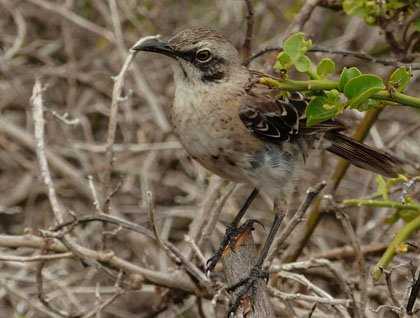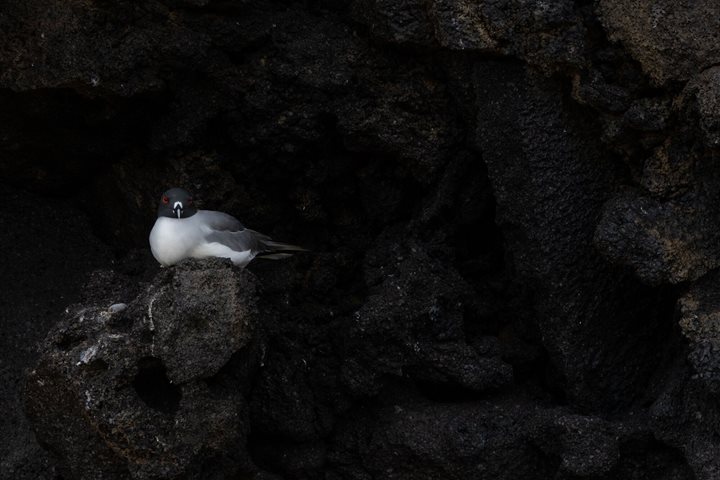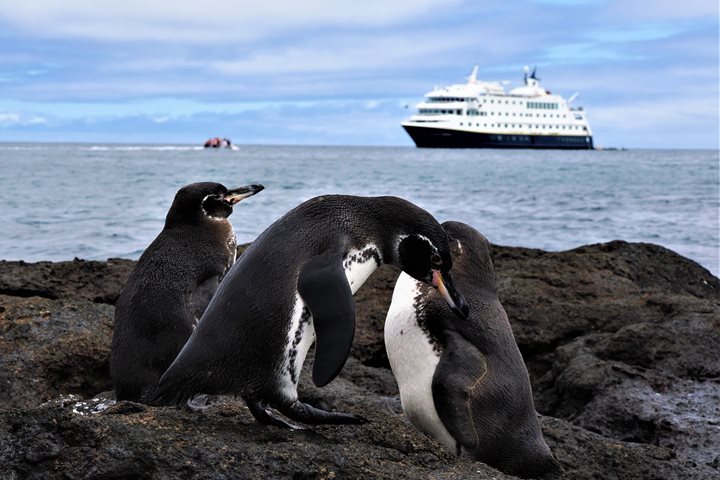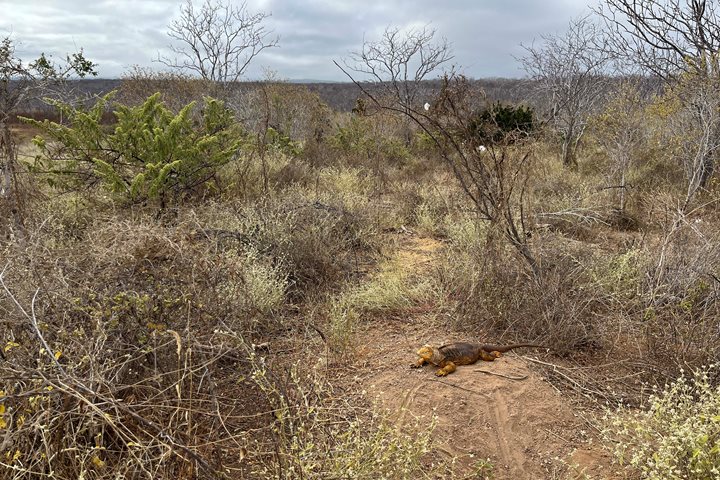After breakfast, the National Geographic Endeavour made her way around the northwestern-most corner of San Cristobal Island and anchored off of Punta Pitt. We were as far east as we could be, and still be in Galapagos. This eroded point was often the first sight of land by seafarers when approaching the islands from the mainland of South America. It is also considered to be possibly the oldest of the islands still above water. The island is very isolated, not only by distance from the others but because of the direction of the wind and ocean currents. Everything travels in an east-to-west direction. Part of the year, we receive the northeast trade winds that bring drifters in from Central America; and part of the year we receive the southeast trade winds, and arrivals from that direction could come from anywhere along the South American western coast from Peru to Tierra Del Fuego!
The morning was spent on a vigorous hike up a ravine that rises over 300 feet in a very short distance. So in other words, this area is very steep. But once we reach the plateau, the gradient levels out and the trail takes us to the outer coast, where the strong trade winds against the bluff create up-drafts, perfect for large sea birds. And that was what we were after, sightings of red-footed boobies. And success was had! Both by the hikers and those who preferred to remain at sea level, red-footed boobies were spotted in the nesting areas, on trees and in bushes. One nesting individual stood up briefly, allowing a glimpse of an egg being warmed by its red, webbed feet! Quite different from the Nazca and blue-footed boobies that nest on the ground; red-footed boobies have prehensile feet, webbed though they may be, and can grasp relatively small branches with confidence.
But there are other species of interest as well on this island. Endemic species here have been reproductively isolated from other populations long enough that they are genetically distinct: specifically the San Cristobal mockingbird and San Cristobal lava lizard. Even the marine iguanas of this remote north-eastern end of San Cristobal Island are now known to be genetically unique – not only from other island populations but also from their cousins down the coast at the opposite end of their very own island! A pretty wild thought…
By the time the walkers returned to the green & gold olivine-crystalled beach, the sun had been out for a while, and it was time to get wet. There is a small colony of Galapagos sea lions that claim this small beach as their own, so it was fun to once more share space on land and in the sea with these most entertaining of creatures. Every sneeze is fascinating to us, every roll in the sand, every roar or bleat. It seems we can never get enough of these creatures who tolerate so patiently our presence on their turf.
The afternoon gave us one more opportunity to go snorkeling. The ship travelled back down south along the northern coast of San Cristobal over lunchtime until we reached the dramatic rock known as “Leon Dormido” or “Kicker Rock”. It was the epitome of a “deep-water” snorkel because around the outside of the rock, the drop down to the sea floor is around 200 feet deep. Through a slot between two tall cliffs, a white sandy sea floor is sometimes visible at 40-50 feet. It is here that we hoped to see some sharks. All sharks are becoming highly endangered because of illegal shark-finning practices. In Galapagos of course, they receive the strongest of protection through rules and fishing regulations, yet our sharks wander beyond the boundaries of our marine reserve, and so we can only hope they return safe and sound. A few blacktip sharks showed up close enough to see details, but the vast majority (and there were a few dozen), stayed at depth, invisible to most, but perceivable as shadows if you knew where to look. The green sea turtles were abundant, especially on the outside flanks. So it was a last, adventurous snorkel of the week, followed by a peaceful circumnavigation of Leon Dormido in the ship for sunset, cocktails and reminiscing. Deep memories have been formed. They may fade with time, but the islands will remain, real in time and space in the middle of the east Pacific Ocean.







